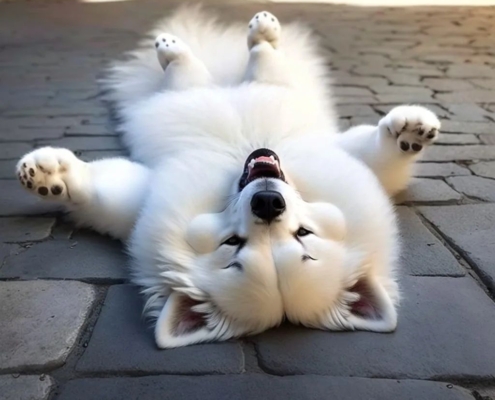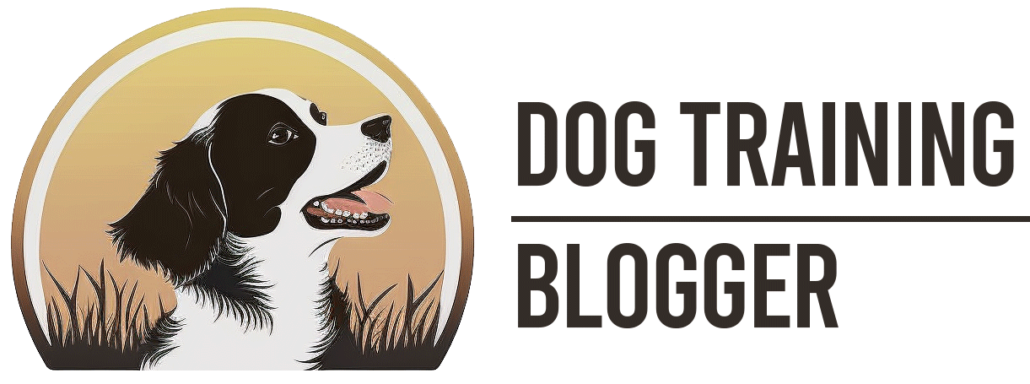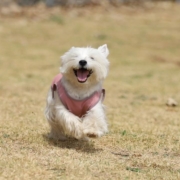Dog Training Without Treats: Tips & Tricks
Trainers have been teaching dogs since ancient times, but the methods they use to train can vary drastically. Some trainers rely on an abundance of treats, while others opt for a more holistic approach. Training without treats is often misunderstood—it is seen as an ineffective, outdated method of dog training, but this couldn’t be further from the truth.
When done correctly, training without treats can be an effective, humane way to teach a dog new behaviors and correct unwanted behavior. This post will explore the different techniques trainers can utilize when training a dog without treats, as well as any potential drawbacks.
| Key Takeaways |
|---|
| Training dogs is an necessary for any pet parent. |
| Treats are not the only way to motivate a dog. |
| Operant conditioning, desensitization, and escape/avoidance are methods of training without treats. |
| The goal when training should be to reward and redirect behaviors. |
| Patience, understanding, and consistency are key when training without treats. |
| Positive reinforcement is important when training any dog. |
Why Is Dog Training Important?
Dogs are social animals, and training them is a crucial part of becoming an active member of your household. Teaching your dog how to behave properly can make them much easier to live with and create a deeper bond between pet and owner. Proper training can also help to curb bad behaviors like barking, aggression, and nuisance behaviors.
Adequately training your dog can lead to improved obedience and better overall behavior. A dog that has been trained properly can understand simple commands like ‘sit’, ‘stay’, and ‘come’ with relative ease. This makes them much easier to handle in public and protects both your dog and members of the general public from any potential issues.
That’s why dog training is so important. It allows your dog to reach their full potential and encourages good behavior.

Training Your Dog Without Treats: Tips & Techniques
Training your dog is essential for any pet parent. Not only does it help keep our four-legged friends safe and healthy, it also helps establish a strong bond between the owner and dog.
While treats are often used as rewards for good behavior, it is possible to train a dog without them. Keep reading for tips and techniques on how to effectively train a dog without treats.

Understanding Training Without Treats
There are several misconceptions when it comes to training without treats. Many fear that their dog won’t understand what they want or be motivated to do anything without an incentive. However, this isn’t true! Dogs are highly intelligent animals and can learn behaviors without the use of treats.
There are various techniques depending on the behavior you want your dog to perform. The following are:
- Operant conditioning
- Desensitization
- Escape/avoidance
These are all approaches owners can take when training without treats. By using these methods and focusing on positive reinforcement, you can help your dog learn the desired behavior.
The Different Training Techniques Without Treats
There are a variety of techniques used for training without treats, each with its own advantages. Let’s explore these techniques and how they can be implemented in order to find the best fit for your dog .
Operant Conditioning
Operant conditioning is based on behavioral psychology and involves reinforcing desired behaviors with positive reinforcement while redirecting undesired behavior. This form of training is based on the idea that animals learn through interactions with their environment.
With operant conditioning, the goal is to reward desirable behavior in order to increase its frequency and eliminate any undesirable behaviors. This method can be applied in a variety of situations with all kinds of animals, not just dogs (more on this in a moment).
Desensitization
Desensitization is another form of training without treats that is used to help animals become less sensitive to certain stimuli.
This method is commonly used for fear-related reactions and can be used in a variety of settings, from socializing a newly adopted dog to helping dogs who suffer from anxiety or other behavioral issues.
The goal of desensitization is to slowly introduce a stimulus at a low level and reward the animal in order to create a positive association.
Escape/Avoidance
Escape/avoidance training is a technique that involves teaching animals to respond to a command or situation by avoiding it.
For example, if you want your dog to stay away from the neighbor’s cat, you would use this type of training to teach them to immediately stop when they encounter the cat.
This form of training is beneficial when trying to teach animals to avoid potentially dangerous situations or hazardous places in the home.
Operant Conditioning for Dog Training
One way to train your dog without treats is through operant conditioning. We mentioned this above.
As defined by the American Humane Association, operant conditioning is “a form of learning in which an animal’s behavior is modified by its consequences, such as reward or punishment.” This means that if your dog performs the desired behavior, they will receive a reward or reinforcement. If they don’t, then there will be a consequence.
These consequences should never be dramatic or hurt your dog in any way.
Instead, consequences should focus on redirecting the bad behavior into something positive that your dog can learn from. For instance, if your dog jumps up on the sofa to get attention, redirect their attention to a toy they can play with instead.
If you would like to know more about this topic, we have a guide to operant dog training.
The Drawbacks of Dog Training Without Treats
Dog training without treats can be a challenging and daunting prospect for first-time trainers. The primary benefit of treats is that they are a reward system that motivates dogs to perform desired behaviors. When you take away this source of external motivation. However, you have to rely instead on the dog’s own intrinsic motivation.
This can be more difficult to achieve, since it depends largely on whether the dog perceives the desired behavior as something desirable.
However, there can be specific drawbacks of training without treats. For instance,
- Some dogs may become too excited and over-stimulated when they are not being rewarded with treats. This can lead to behaviors such as barking and jumping, which are not conducive to a calm and successful training environment.
- Additionally, if the dog is not properly trained in basic obedience, it can be difficult for them to respond to commands without some form of external reinforcement.
These drawbacks can be minimized by setting clear expectations for the dog and creating a consistent routine.
It is important to establish a reliable and predictable pattern of reinforcement so that the dog is always sure of what is expected from them. Additionally, punishments should be kept at an absolute minimum, because the goal is to create a positive learning environment.
Finally, it is important to keep in mind that all dogs are different, so patience and dedication are essential while you are training without treats. Every dog has unique needs, and it can take some time to figure out what works best for them.
If you maintain consistency, stay positive, and use positive reinforcement techniques, you will be able to help your dog learn and progress quickly.
Training Your Dog Without Treats: An Easy-to-Remember Checklist
Training your dog can be an overwhelming task, but it doesn’t have to be. With the right techniques, you can successfully train your dog without treats. Here’s a helpful checklist to keep in mind while training your dog without treats.
- Use Operant Conditioning
Reinforce desired behaviors with verbal praises or physical petting and reprimand undesirable behavior with a change of tone. - Practice Desensitization
Expose your dog to small, controlled portions of the stimulus until he or she becomes comfortable. - Do Escape/Avoidance Training
Guide your dog away from areas or activities that trigger negative behavior. - Be Consistent
Stick to the same rules and methods you establish from the start. - Be Patient
Rome wasn’t built in a day, and neither was your dog’s obedience. Be patient but firm. - Be Supportive
Celebrate successes and offer reassurance when needed.
By using these techniques and following this checklist consistently, you should see some positive changes in your dogs behavior.
Remember, everything takes time and practice so be patient and persistent! And if you need help along the way, don’t hesitate to reach out for assistance.
In Summary…
Training a dog without treats can be an effective and rewarding experience for both owner and your dog.
Effective training without treats involves using operant conditioning, desensitization, and escape/avoidance to help modify behaviors.
While there are potential drawbacks with this approach, such as lack of incentive or reward for the dog, strategies such as providing praise, playing interactive games, and rewarding good behavior through activities can help reduce any negative repercussions.
By following these tips and employing the various techniques discussed in this guide, anyone can gain a better understanding of how to train their dog without treats. Ultimately, dog training without treats is a skill that can be learned and perfected, and with a little effort and patience, all owners can learn to encourage desirable behaviors while helping their dog become a happy, healthy, and well-behaved companion.
Remember your success here with treat-less training will vary as it is dependant very much on each individual dog. Some dogs will “go nuts” for play as a reward and prefer this, others will not be that bothered and they would frankly value the treat over any play time.
Mix it up and see what happens is our ultimate advice.
FAQs: Can I Train my Dog Without Treats?
We put these common questions together to help cover this topic.
- Q: Can I train my dog without treats?
A: Absolutely. While treats are a popular way to reward your dog for good behavior, reinforcment techniques such as operant conditioning, desensitization, and escape/avoidance can also be effective in training without the need for treats. - Q: What are the potential drawbacks of treating training without treats?
A: The strongest drawback is that it may take longer for your dog to understand the desired behavior without the use of treats. Additionally, if your dog has difficulty responding to verbal cues, he or she may have a harder time understanding the desired behavior without rewards. - Q: What strategies can I use to minimize potential drawbacks of training without treats?
A: One strategy you can use is breaking the training process into small parts and rewarding your dog with a verbal cue or a pet on the head each time they complete a part correctly. Additionally, making training sessions short but more frequent can also help speed up the process of learning. - Q: Are there any successful examples of dogs being trained without treats?
A: Yes, there are plenty of examples. One of the most famous is Pavlov’s dog who was conditioned to associate the sound of a bell with food. This is an example of successful classical conditioning and how it can be used to teach a dog new behaviors without the use of treats. - Q: What type of results can I expect when training my dog without treats?
A: When done properly, you can expect similar results as when using treats. With training without treats, your dog will learn to respond to verbal cues and even be able to recognize the desired behavior without any rewards. - Q: Is there any advice you can give me when I start training my dog without treats?
A: Yes, be patient and consistent. Make sure to break down your training into smaller parts to make it easier for your dog to understand the desired behavior. Additionally, always reward your dog with verbal cues or a pet on the head when they do something right. - Q: How can I share this article with others?
A: You can easily share this article by clicking on the social media icons at the bottom of the post. Additionally, please reach out with any questions or advice related to your own training experiences.



